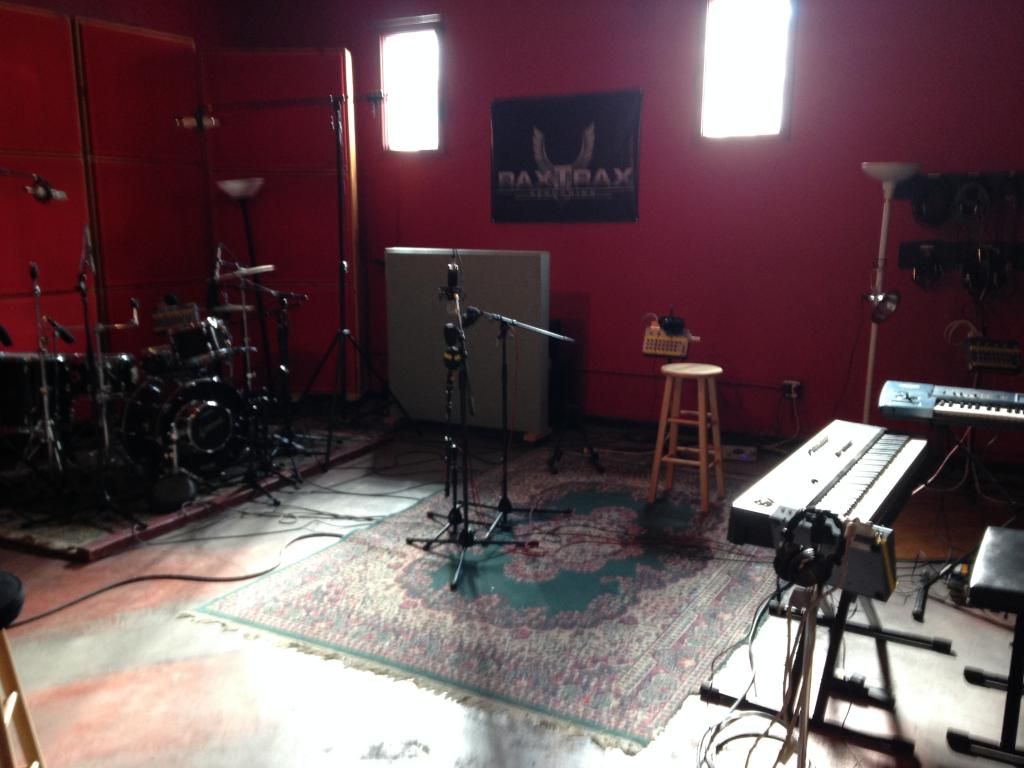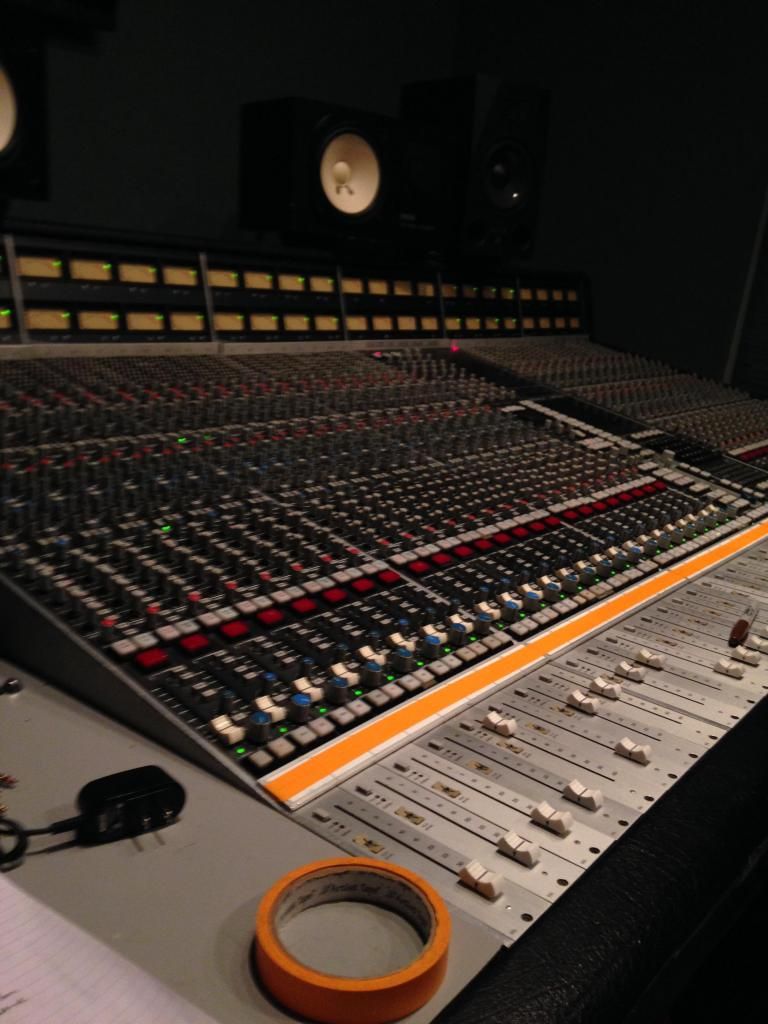What is sound?
Sound is made possible through the vibrations of an object displacing the air molecules around it. Compresses air molecules pushed forward into other air molecules. Rare faction is the readjustment of air/energy. Inverse square is the energy lost per unit of distance. A sine wave is a "perfect wave". Atmospheric pressure is the natural air pressure around us at all times. The sound of a balloon popping is compressed air/carbon dioxide and other molecules quickly diffusing into the lower pressure of what's outside the balloon.
Waveform Characteristics
A waveform is the graphic representation of the amplitude of a sound pressure wave over a period of time. Amplitude is the measure of its change over a single period. Amplitude is the same as loudness is the same as volume. Amplitude can be measured in SPL (Sound Pressure Level) or voltage. Peak amplitude value is the measurement of the max value of the signal. Peak to peak amplitude value is the value between the peak and trough. RMS or root means square amplitude. Decibel (dB) is a unit of measure for amplitude. Was first called MSA for Miles of Standard Cable, later changed to TU or Transmission Unit. Transmission Unit was a ration of measured power level to a designated reference power level. In 1923-24 the TU was changed to the dB (decibel) in honor of Alexander Graham Bell. Sounds in the world are measured by dB SPL. Optimal mixing level for engineers is 85-95 dB SPL. dB SPL is the acoustic reference point measured per unit in a given location.
Frequency
Frequency is the number of occupancies of a repeating event per unit of time and can be divided into 1 compression, and 1 rare faction Frequency is the same thing as pitch. Frequency is measured in cycles per second or Hz (Hertz). Humans have a frequency range of 20 Hz to 20,000 Hz or 20 kHz
Harmonic Content
Timbre is the combination of qualities of a sound that distinguishes it from other sounds of the same pitch and volume. Fundamental Frequency is the overall frequency of an instrument or wave. Anytime you double a frequency you're increasing an octave. The Human vocal frequency range is 150 Hz to 1.5 kHz.
Velocity
Velocity as a waveform characteristic is very closely related to the speed at which a sound wave travels.
Wavelength
Wavelength refers to the physical distance between the beginning and end point of one cycle. Wavelength is dependent on frequency.
Reflections
The explanation for how sound behaves when coming in contact with an object.
Phase
Phase is important because if 2 mic's pick up the same frequency it will invert 180 degrees. Phase is a waveforms position in time.
Phase Shift
Two mic's at 2 different distances can cause phase cancelation. Phase shift can also occur with a single mic and room reflections. Phase shift is what happens when one waveform is delayed from another and then mixed together.
Envelope
Simple waveforms are waveforms that have some type of uniform shape that is generally repeated. Complex waveforms are mostly produced by instruments and the human voice.
ADSR
An envelope of a waveform can be described as variations in amplitude that occur in a period of time over the duration of a note. Envelope is broken down into 4 sections. Attack is the time taken for sound to build up to the full amplitude. Decay is the time from attack to designated sustain level. Sustain is the main duration of a note occurring after the attack decay until the note is released by the musician. Release is the amount of time it takes after the musician has stopped playing for a sound to return to silence.
Hearing
The outer ear is called the Pinea which is Latin for feather. The outer ear helps localize sound and filters out certain frequencies because of its shape. Sound localization is the process of determining where a sound is located. There are many factors in sound localization such as distance, direction, time, and proximity. Shape of the outer ear is specifically designed to produce phase cancelations in special circumstances. The outer ear also amplifies and directs sound to the ear drum or tympanic membrane. The ear drum is a small flap of skin that vibrates back and forth along with sound vibrations. The ear drum separates outer ear from the middle ear. Attached to the bank of the ear drum are the smallest bones in the human body, the malleus, the incus, and the stapes. When the tympanic membrane vibrates back and forth the three little bones amplify the signal using hydraulic like lever action. The Cochlea is one of the most complex organs in the human body and lies in the middle ear. It has different follicles for different frequencies and contains liquid. The hair follicles vibrates and send impulses through nerve endings into the brain which are then interpreted. Protect your ears as there is no replacing ear hair follicles (yet!). High SPL increases hearing loss. Clinical ear plugs are a good idea.
Psychoacoustics
The brain is the most complex organ of the human body. Human beings perceive certain frequencies as being softer or louder than they actually are, at certain dB levels. It is important to mix at 85-95 dB for optimum translation and manipulation after the mixing has taken place and is being transferred to different devices with different speakers, equalization, etc. Acoustic Beats occur(s) when two sounds close in frequency are played together. The result is an audible phase interaction.
Masking
Auditory masking occurs when the perception of one sound is affected by the presence of another. Our brains focus on the loudest sound for survival purpose.
Beats
Acoustic beats occur when two sounds with slight frequency differences interact with each other
Stereo Imaging
Stereophonic sound reproduction consists of listening to a recorded performance on two speakers. Stereo image is the perception of depth, space, and the ability to locate individual elements of the mix within a two channel stereo recording. panning can create space. Using reverb or delay can create depth and space.
My first in studio session this past Friday from 10AM-12PM was great. Right away I was greeted by Rick the owner of Rax Trax, retoured the facility real quick, then was able to put some working knowledge into play and help make sure they had a few keyboards talking to each other correctly and sustain pedal behaving properly; it really felt great to get my hands on some equipment in the studio. I had my one on one with Andy and we thoroughly reviewed the course material and expounded on a few additional topics which was consistently interesting. I overall have a great feeling about this place and am really excited for the next session.
the lounge and some miscellaneous keys

the mic closet

the main live room

the board in control room b


